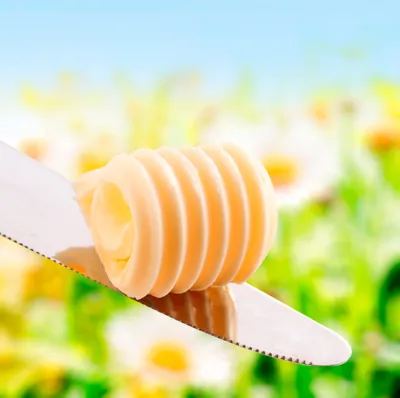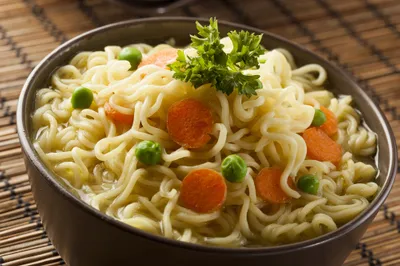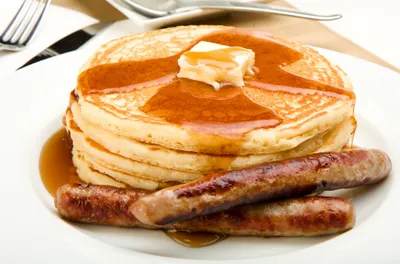This past June the U.S. Food and Drug Administration announced plans to eliminate the use of trans fats by the year 2018. The reason: trans fats have been shown to raise levels of low-density lipoprotein (popularly known as “bad” cholesterol) while lowering so-called “good” cholesterol. Beyond that, consuming foods high in trans fats has been shown to increase the risk of obesity and the many health conditions that accompany obesity, including heart disease and diabetes.
Given these risks, it’s important people have the ability to identify and avoid those foods high in trans fats. Since it will be a couple years until these foods are gone from store shelves, it’s worth getting to know these foods so you can make healthier diet choices…
1. Margarine
Generally speaking, health experts believe that margarine is healthier than butter, which is high in saturated fat. But many brands of margarine are also high in trans fat, which has been shown to elevate low-density lipoprotein (LDL) levels.
Not sure which type of margarine is high in trans fat? Obviously, you should check the nutritional label. But the general rule is this: if the margarine is solid, there’s a good chance it contains a lot of trans fat. If it’s soft or liquid in form, chances are the trans fat levels are low or non-existent.
2. Packaged Mixes
In most cases packaged foods don’t taste quite as good as foods that are prepared using fresh ingredients. To try and compensate for this, manufacturers of packaged foods often use trans fat, because it can help improve the taste and texture—as well as the shelf life—of processed items.
That’s why you should carefully read the nutritional label attached to many packaged foods, including cake, muffin, and pancake mixes. When it comes to trans fats, the lower the number the better.
3. Instant Ramen Noodles
Instant Ramen noodles are a popular food choice for many young people and that’s no surprise. Not only are they relatively tasty—thanks in large part to their high salt content—but they’re also extremely easy to prepare.
The problem is, instant Ramen noodles are very high in saturated and trans fats, meaning they can increase one’s risk of raising their cholesterol levels and becoming obese. Those’s why most health experts recommend avoiding the packaged variety of Ramen noodles, and instead suggest visiting an actual restaurant known for preparing this type of food using fresh, lower-fat ingredients.
4. Fast Food French Fries
Here in North America there are few foods more popular than French fries, which accompany most fast-food meals. But French fries are notoriously unhealthy, particularly when prepared by fast food restaurants.
The trick is to avoid restaurants where the fries are high in trans fat. For example, Jack in the Box fries contain 5-grams of trans fat per serving, while Long John Silvers contain 3.5-grams of trans fat per serving. The better, lower trans-fat options can be found at Sonic and McDonald’s.
5. Deep-Fried Foods
If you want to avoid consuming trans fats, you’ll have to cut out your consumption of deep-fried foods, like fried chicken, jalapeno poppers, and mozzarella sticks. That’s because most restaurants in North America continue to use cheaper, partially hydrogenated oils in their deep fryers, which means they’re essentially infusing their food with trans fats.
Of course, this won’t be the case in all restaurants. That’s why health experts recommend you ask the server, chef, or restaurant manager if they use trans-fat-free oils when cooking their food.
6. Baked Goods
North Americans love their baked goods, including cakes, cookies, pie, crackers, and donuts. According to the Mayo Clinic, most of these foods – whether prepared fresh or packaged—involve the use of partially hydrogenated vegetable oil, which raises the food’s trans fat volume. It’s also worth noting that the icing that goes on these baked goods also typically contains trans fats.
If you’re trying to lose weight or just make your diet healthier, as a rule avoid baked goods entirely. If you’re simply keen on lowering your consumption of trans fats, assume all baked goods contain these fats unless they specifically indicate otherwise.
7. Crackers
Many of the food companies behind potato chips have worked to remove trans fats from their products. But there are still many types of crackers that contain trans fats. That’s because trans fat remains solid at room temperature, which helps keep a product crispy. And crispiness is essentially the key characteristic of any good cracker.
When choosing your crackers, be sure to read the nutritional label carefully. Although many manufacturers of crackers have made the effort to remove trans fats from their products, a surprising number of cracker brands continue to include these very unhealthy fats.
8. Breakfast Sausages
Most breakfast sausages are made from pork or beef, both of which are, in most cases, high in saturated fat. But many restaurants cook their sausages—whether in link or patty form—by deep-frying them, which can substantially increase their trans fat content. Trans fats can also be added if a chef uses butter or lard to pan fry breakfast sausages.
To keep the trans fat content of breakfast sausages down, cook them at home in extra virgin olive oil or canola oil. If you’re visiting a restaurant, ask that the chef avoid using a deep fryer or butter or lard to complete your order.











